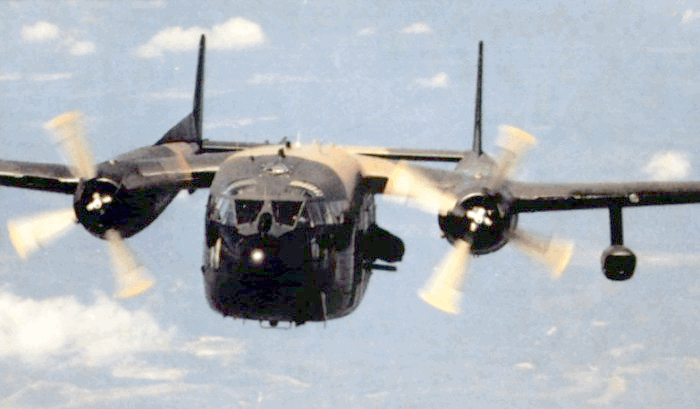|
NESTOR (encryption)
NESTOR was a family of compatible, tactical, wideband secure voice systems developed by the U.S. National Security Agency and widely deployed during the Vietnam War through the late Cold War period of the 1980s. NESTOR consists of three systems. The KY-8 was used in vehicular and afloat applications; the KY-28 was the airborne version; and the KY-38 was the portable or man-pack model. About 30,000 NESTOR equipments were produced prior to their replacement by the VINSON secure voice family.A History of U.S. Communications Security; the David G. Boak Lectures National Security Agency (NSA), Volumes I, 1973, Volumes II 1981, partially released 2008, additional portions declassified October 14, 2015 Keying was accomplished by setting each switch in ... [...More Info...] [...Related Items...] OR: [Wikipedia] [Google] [Baidu] |
AC-119
The Fairchild AC-119G Shadow and AC-119K Stinger were twin-engine piston-powered gunships developed by the United States during the Vietnam War. They replaced the Douglas AC-47 Spooky and operated alongside the early versions of the AC-130 Spectre gunship. Design and development By late 1967, the idea of the fixed-wing gunship had been proven so successful, the United States Air Force was having a difficult time keeping up with demand. The newer AC-130s that had been created under Project Gunship II were effective, but were being mostly used for armed reconnaissance and interdiction of the Ho Chi Minh Trail. Furthermore, the C-130 airframe was in active service as a transport, vital to the war effort in Southeast Asia. The Air Force desperately needed a new gunship to replace the vulnerable and underpowered AC-47 in the close air support role, as well as supplementing the AC-130 in attacking targets on the Ho Chi Minh Trail. The Fairchild C-119 Flying Boxcar presented an ob ... [...More Info...] [...Related Items...] OR: [Wikipedia] [Google] [Baidu] |
NSA Encryption Systems
The National Security Agency took over responsibility for all U.S. Government encryption systems when it was formed in 1952. The technical details of most NSA-approved systems are still Classified information in the United States, classified, but much more about its early systems have become known and its most modern systems share at least some features with commercial products. Rotor machines from the 1940s and 1950s were mechanical marvels. The first generation electronic systems were quirky devices with cantankerous punched card readers for loading key (cryptography), keys and failure-prone, tricky-to-maintain vacuum tube circuitry. Late 20th century systems are just Black box (systems), black boxes, often literally. In fact they are called ''blacker (security), blackers'' in NSA parlance because they convert plaintext classified signals (''red'') into encrypted unclassified ciphertext signals (''black''). They typically have electrical connectors for the red signals, the black ... [...More Info...] [...Related Items...] OR: [Wikipedia] [Google] [Baidu] |
Cryptoperiod
A cryptoperiod is the time span during which a specific key (cryptography), cryptographic key is authorized for use. Common government guidelines range from 1 to 3 years for asymmetric cryptography, and 1 day to 7 days for symmetric cipher traffic keys. Factors to consider include the strength of the underlying encryption algorithm, key length, the likelihood of compromise through a security breach and the availability of mechanisms of revoking keys. In traditional cryptographic practice, keys were changed at regular intervals, typically at the same time each day. The code word for a key change, in NSA parlance, is HJ or Hotel Juliet in the NATO phonetic alphabet. When cryptographic devices began to be used in large scale, those who had to update the key had to set a specific time to synchronize the re-key. This was accomplished at the hour (H) the Julian (J) Date changed, among crypto-accountants, managers and users the jargon "HJ" became the accepted term meaning it was time to ... [...More Info...] [...Related Items...] OR: [Wikipedia] [Google] [Baidu] |
F-4 Phantoms
The McDonnell Douglas F-4 Phantom II is an American tandem two-seat, twin-engine, all-weather, long-range supersonic jet interceptor and fighter-bomber originally developed by McDonnell Aircraft for the United States Navy.Swanborough and Bowers 1976, p. 301. Proving highly adaptable, it entered service with the Navy in 1961 before it was adopted by the United States Marine Corps and the United States Air Force, and by the mid-1960s it had become a major part of their air arms. Phantom production ran from 1958 to 1981 with a total of 5,195 aircraft built, making it the most produced American supersonic military aircraft in history, and cementing its position as an iconic combat aircraft of the Cold War."F-4 Phantoms Phabulous 40th" Boeing. Retrieved : 27 November 2012. [...More Info...] [...Related Items...] OR: [Wikipedia] [Google] [Baidu] |
Northrop Grumman E-2 Hawkeye
The Northrop Grumman E-2 Hawkeye is an American all-weather, carrier-capable tactical airborne early warning (AEW) aircraft. This twin-turboprop aircraft was designed and developed during the late 1950s and early 1960s by the Grumman Aircraft Company for the United States Navy as a replacement for the earlier, piston-engined E-1 Tracer, which was rapidly becoming obsolete. The aircraft's performance has been upgraded with the E-2B and E-2C versions, where most of the changes were made to the radar and radio communications due to advances in electronic integrated circuits and other electronics. The fourth major version of the Hawkeye is the E-2D, which first flew in 2007. The E-2 was the first aircraft designed specifically for its role, as opposed to a modification of an existing airframe, such as the Boeing E-3 Sentry. Variants of the Hawkeye have been in continuous production since 1960, giving it the longest production run of any carrier-based aircraft. The E-2 also received ... [...More Info...] [...Related Items...] OR: [Wikipedia] [Google] [Baidu] |




